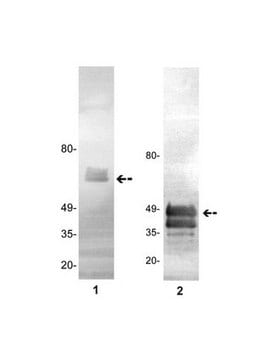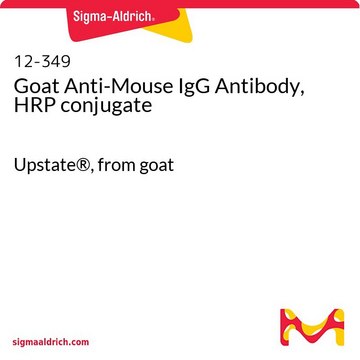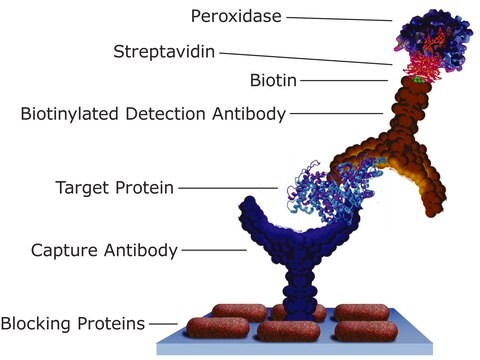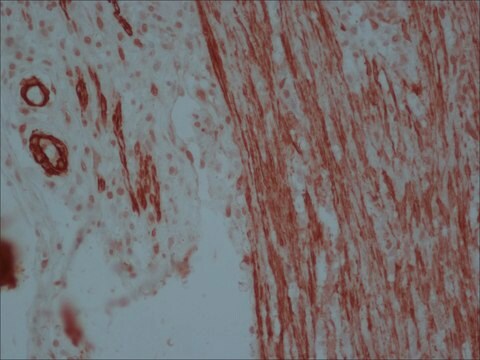P4680
Anti-Protein C antibody produced in rabbit
IgG fraction of antiserum, buffered aqueous solution
Sign Into View Organizational & Contract Pricing
All Photos(1)
About This Item
conjugate:
unconjugated
application:
WB
clone:
polyclonal
species reactivity:
human
citations:
8
technique(s):
western blot: 1:500
Recommended Products
biological source
rabbit
Quality Level
conjugate
unconjugated
antibody form
IgG fraction of antiserum
antibody product type
primary antibodies
clone
polyclonal
form
buffered aqueous solution
species reactivity
human
technique(s)
western blot: 1:500
UniProt accession no.
shipped in
dry ice
storage temp.
−20°C
target post-translational modification
unmodified
Gene Information
human ... PROC(5624)
Related Categories
General description
Protein C (PROC) or activated protein C is a serine protease. It is expressed in the lungs. The gene encoding this protein is localized on human chromosome 2q14.
Protein C is synthesized by liver parenchymal cells as a single chain polypeptide, but in plasma, it consists mainly of a heavy chain (41 kDa) linked by a disulfide bond to a light chain (21 kDa). The plasma concentration of protein C is ~ 4 mg/mL with a half-life of about 15 hours.
Specificity
Specifically reacts with protein C in normal pooled human plasma and shows no reaction with protein C-depleted plasma.
Immunogen
Protein C from human plasma.
Application
Anti-Protein C antibody produced in rabbit has been used to study the effects of zirconia-based stationary phase on its activity.
Anti-Protein C may be used for the immunochemical determination of protein C levels in normal and pathogenic human plasma. Determination of protein C levels can be used in the study of regulation of blood coagulation and fibrinolysis.
Biochem/physiol Actions
Protein C (PROC) functions as a cytoprotective anticoagulant and has anti-inflammatory effects. PROC inactivates factors Va and VIIIa. The protein stabilizes the endothelial barrier and thereby reduces vascular permeability. It also modulates gene expression.
Protein C is a vitamin K-dependent plasma zymogen which plays an essential role in the regulation of blood coagulation. Activated protein C also enhances fibrinolysis by forming a complex with plasminogen activator inhibitor, thus allowing enhanced activity of plasminogen activator. Hereditary and acquired protein C deficiency states have been recognized to be associated with thrombosis. Homozygous severe protein C deficiency manifests in the new born by massive thrombosis and purpura fulminans. Heterozygotes for this entity usually do not manifest thrombosis.
Physical form
Solution in 0.01 M phosphate buffered saline, pH 7.4, containing 15 mM sodium azide.
Disclaimer
Unless otherwise stated in our catalog or other company documentation accompanying the product(s), our products are intended for research use only and are not to be used for any other purpose, which includes but is not limited to, unauthorized commercial uses, in vitro diagnostic uses, ex vivo or in vivo therapeutic uses or any type of consumption or application to humans or animals.
Not finding the right product?
Try our Product Selector Tool.
Storage Class
10 - Combustible liquids
wgk_germany
WGK 3
flash_point_f
Not applicable
flash_point_c
Not applicable
ppe
Eyeshields, Gloves, multi-purpose combination respirator cartridge (US)
Choose from one of the most recent versions:
Already Own This Product?
Find documentation for the products that you have recently purchased in the Document Library.
Laurell, C.B. et al.
Protides Biol. Fluid Proc. Colloq., 499-499 (1966)
Association of common genetic variation in the protein C pathway genes with clinical outcomes in acute respiratory distress syndrome
Anil Sapru
Critical Care, 20, 151-151 (2016)
Protein C Thr315Ala variant results in gain of function but manifests as type II deficiency in diagnostic assays
Ding Q, et al.
Blood, 125(15), 2428-2434 (2015)
Activated protein C inhibits neutrophil extracellular trap formation in vitro and activation in vivo.
Healy LD
The Journal of Biological Chemistry, 292(21), 8616-8629 (2017)
The protein C pathway in tissue inflammation and injury: pathogenic role and therapeutic implications
Danese S, et al.
Blood, 115(6), 1121-1130 (2010)
Our team of scientists has experience in all areas of research including Life Science, Material Science, Chemical Synthesis, Chromatography, Analytical and many others.
Contact Technical Service








